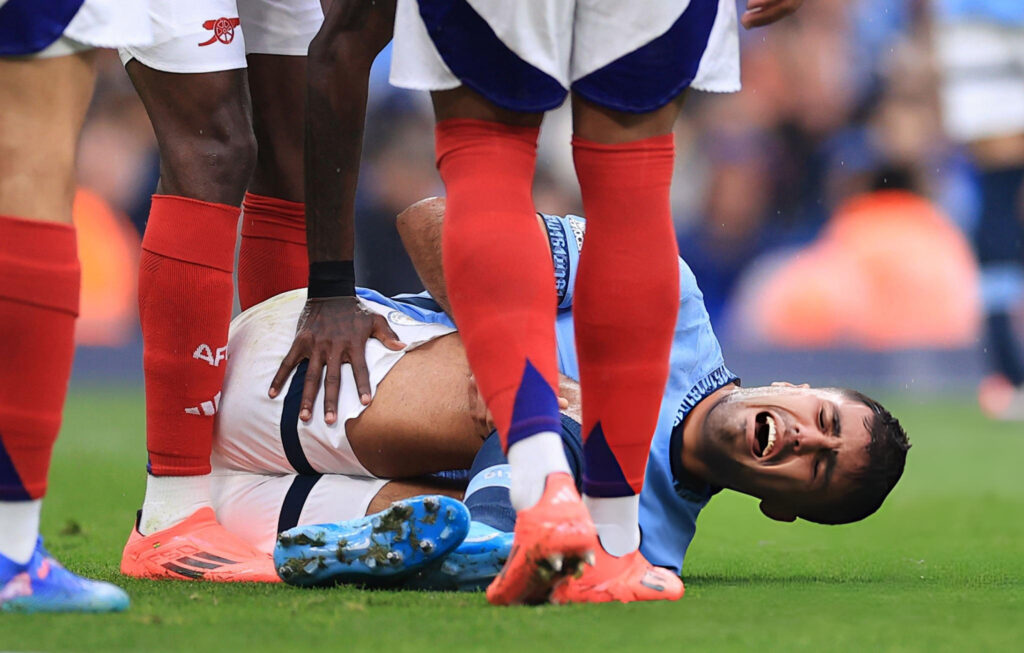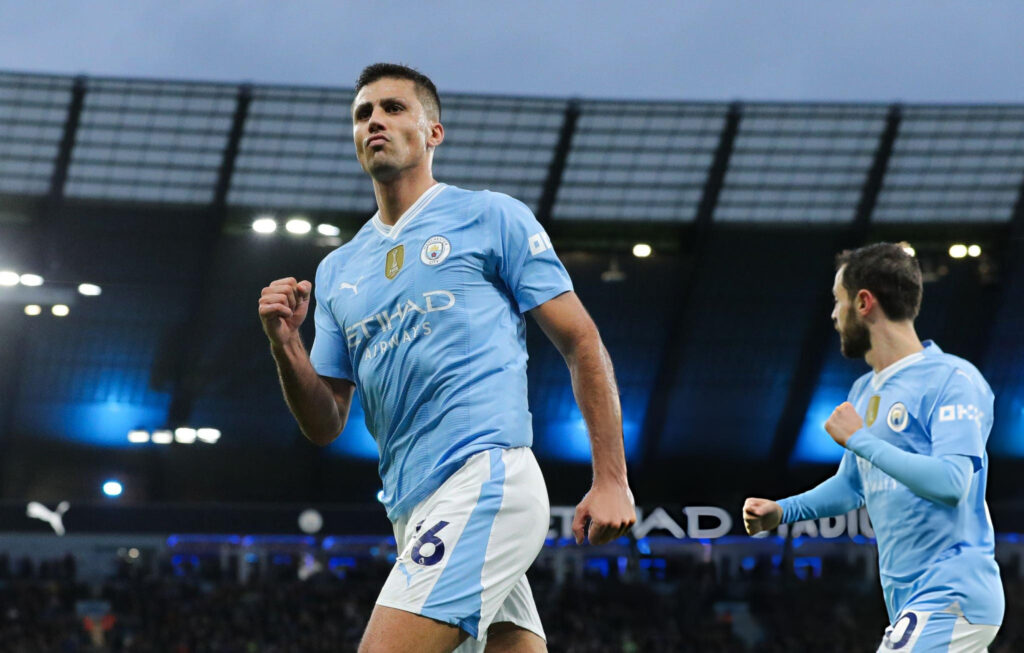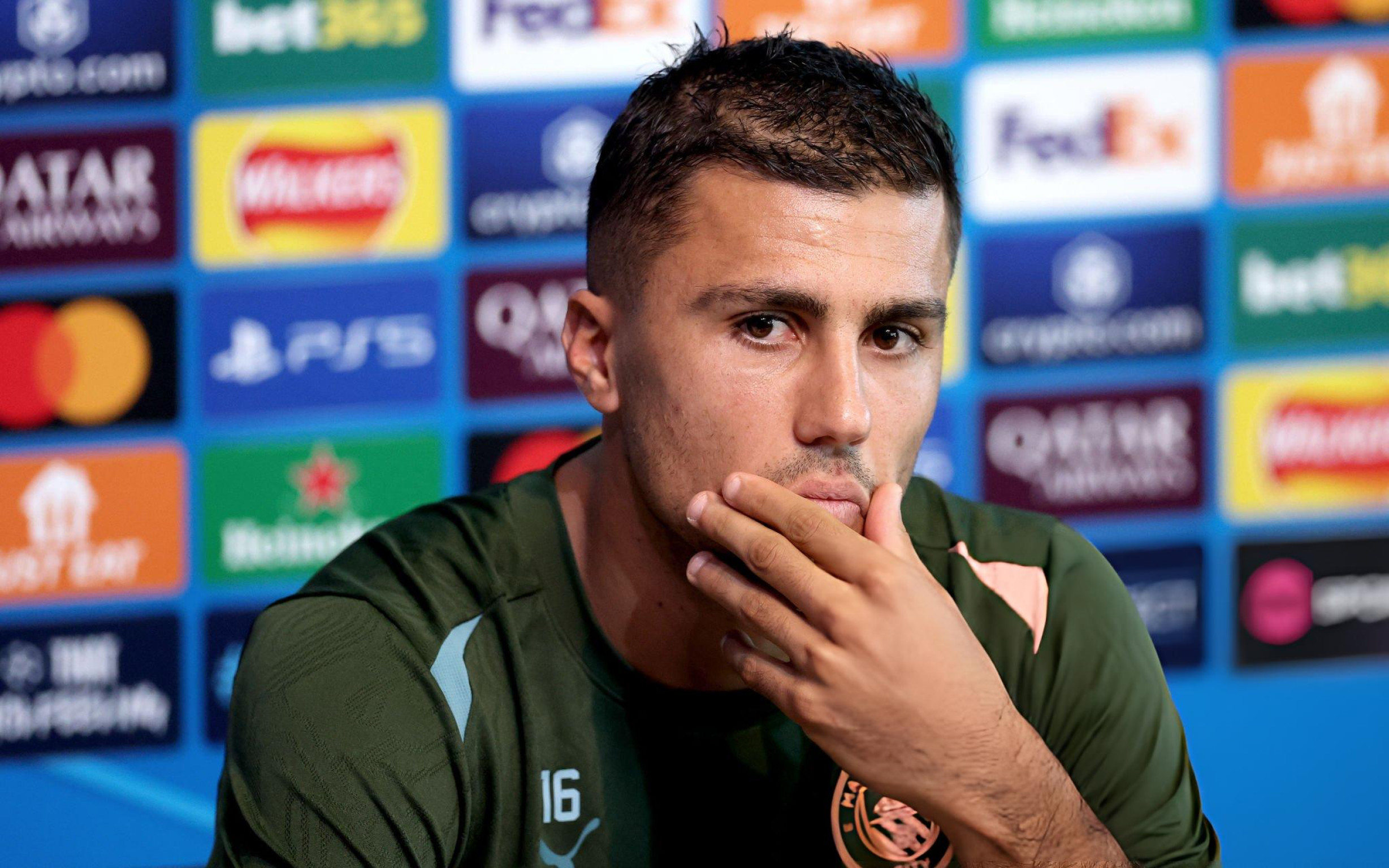For Manchester City’s midfield general Rodri, the past 13 months have been a painful lesson in patience, perseverance, and recovery. Once the heartbeat of Pep Guardiola’s machine and the 2024 Ballon d’Or winner, the Spaniard is still battling to recapture his pre-injury brilliance after a serious knee ligament injury derailed his career momentum.
Even now, Guardiola admits he cannot put a timeline on Rodri’s full return.
“Rodri still is not [available]. He is getting better,” Guardiola said this week. “He’s training with us. Hopefully soon, but not yet.”
It’s the latest twist in what has been a stop-start comeback for one of football’s most consistent midfielders — a player City have struggled to truly replace during his absence.
The Long Road Back
Rodri’s nightmare began in September 2024, when he damaged his anterior cruciate ligament in a bruising 2–2 draw against Arsenal. After surgery and months of rehabilitation, he began light training by February and rejoined the full squad in April. His first Premier League start came at the end of August against Brighton — nearly a full year after the initial injury.
But the recovery was anything but smooth. During the Club World Cup against Al Hilal, Rodri complained of renewed discomfort in his knee. Weeks later, he limped off against Napoli, and by October, a hamstring strain ruled him out again.
It was clear that his return would be a slow, cautious process, with Guardiola and City’s medical team prioritising long-term stability over short-term gain.

More Than Physical: The Mental Battle of Rehabilitation
Recovering from a major injury is never just a physical process — it’s an emotional and psychological battle, too.
Former Manchester United winger Ben Thornley, who suffered a similar knee injury in 1994, captured the struggle perfectly:
“You can hear all the other lads coming into training, and you just know that’s not going to be you for the foreseeable future. It’s soul-destroying at times.”
The isolation of gym work, the endless repetition, and the uncertainty about when — or if — you’ll return to your best can wear on any player.
Colin Lewin, Arsenal’s former head of medical services, echoed that sentiment:
“Every player’s recovery is different. Fans don’t always realize that getting back on the grass isn’t the end of rehab — it’s just the final stage. And that part can be the hardest.”
Even when a player is declared “fit,” the rhythm, sharpness, and confidence take much longer to return. Lewin explained that it often takes a full year for a footballer to truly feel themselves again after an ACL injury — both physically and mentally.
Finding Rhythm and Confidence Again
Rodri’s numbers underline how limited his contributions have been this season. He has featured for just 293 Premier League minutes, roughly 36% of City’s total across nine games. For a player who appeared in 172 of 190 league matches between 2019 and 2024, the contrast is stark.
Guardiola has admitted that managing Rodri’s workload is a balancing act.
“After three games in a week — United, Napoli, Arsenal — we could see the fatigue. We have to protect him,” he said.
But fatigue isn’t just muscular — it’s also psychological. During the 2–2 draw with Monaco, a heavy challenge left Rodri visibly shaken. Though he played on briefly, Guardiola substituted him after realising his composure had gone.
Lewin compared this to Aaron Ramsey’s leg break in 2010, explaining that even after full recovery, players can carry a subconscious fear:
“Every player has that first big tackle moment — the one that proves they can trust their body again. Until then, the mind holds back, even if the body is fine.”

City’s Options Without Rodri
In Rodri’s absence, Guardiola has relied on Nico González, signed from Porto in January, and Mateo Kovačić, who is returning from Achilles surgery. While both bring energy and control, neither can replicate Rodri’s unique blend of positional intelligence, passing range, and calm authority.
City’s midfield has looked more vulnerable without him, particularly in transitions — an area where Rodri has long been their shield and stabiliser. Still, Guardiola insists patience is key:
“Rodri has been and is an outstanding player. But after one year on the massage table, the body changes, the rhythm changes. Step by step, he will be back.”
The Path to Ballon d’Or Form
So, how can Rodri regain the level that saw him crowned the best player in the world in 2024?
Experts suggest three key steps:
- Time and Gradual Workload – No shortcuts. City’s cautious rotation will allow Rodri to rebuild fitness and confidence without relapse.
- Psychological Resilience – Overcoming the mental barrier of contact, trust, and full-intensity play is crucial. Sports psychologists play a key role here.
- Consistency in Minutes – Once fully fit, Rodri needs a run of games to regain rhythm — something only match repetition can restore.
As Lewin summarised:
“You don’t become a bad player in nine months. But sometimes players forget that — it takes training and confidence to make things automatic again.”

What’s Next for Rodri and City
Guardiola hinted that fans may have to wait until next season to see the “real” Rodri again — or possibly the 2026 World Cup, where Spain will rely heavily on his leadership.
“Next summer, at the World Cup, you’ll see the best Rodri,” said Guardiola. “This season is about managing the steps.”
For now, City and their fans must continue to be patient. Rodri’s comeback may not be complete, but if history has shown anything, it’s that the Spaniard always finds his way back to the top.

